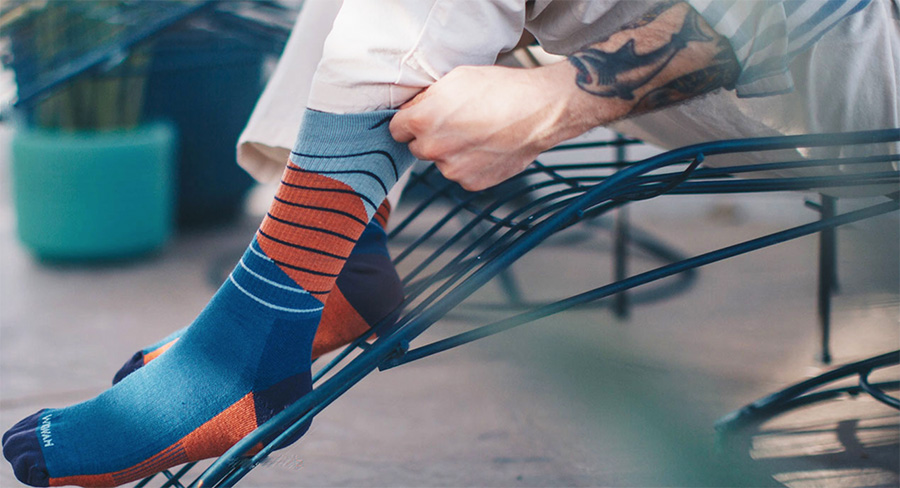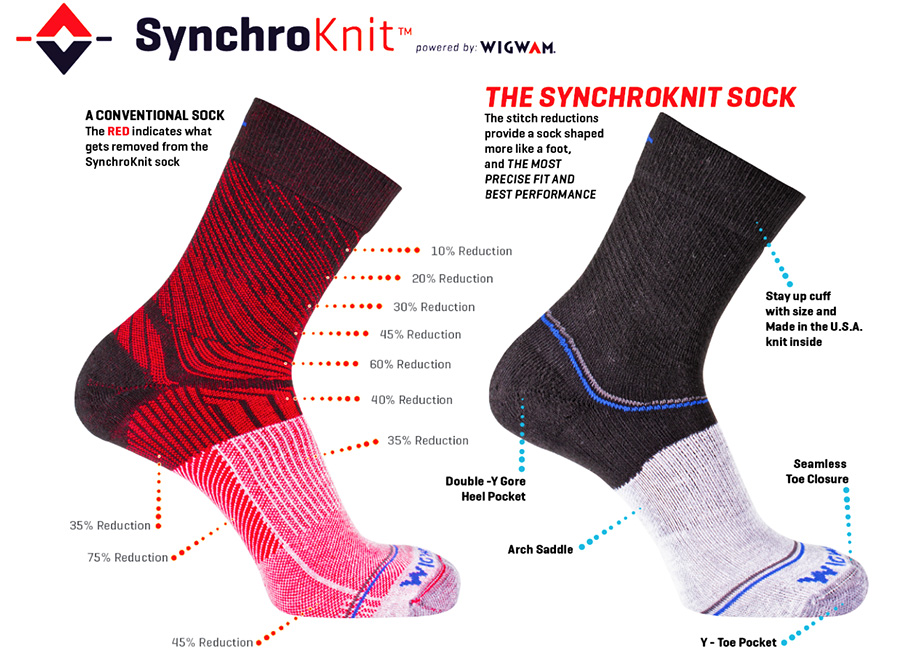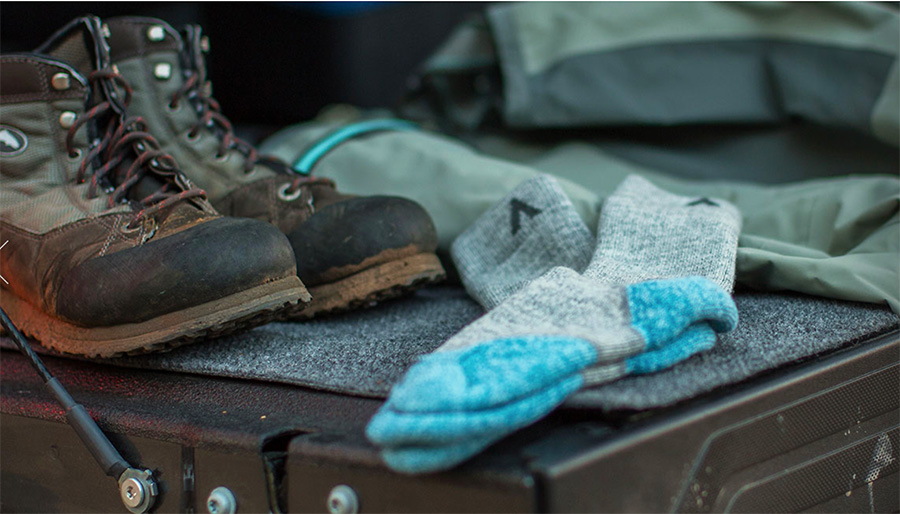By Teresa Hartford
<span style="color: #999999;">Looking at the landscape and being stewards of the environment, Wigwam has always been forward-thinking in the steps they have taken to be conscious of the company’s footprint on the environment—sourcing yarns from domestic spinners, using solar power and the energy harvested for water processing in manufacturing, plant-based yarn dyes that are water-soluble, and recycled materials for packaging to name a few.
However, when Wigwam looked at manufacturing best practices from a broader lens, they wanted to do more. So, for every yarn that gets clipped and hits the cutting room floor, they adopted a ‘No Fiber Left Behind Policy’. First-quality socks are sold at retail, and they have channels for distributing socks that may have slight imperfections. For socks that fit neither category, rather than leaving them on the cutting room floor, Wigwam employees donate their own time, gather the socks which can still be worn, pair them up, attach a tag that reads ‘Much Loved From Wigwam Mills,’ box them up and can designate that they go to any 501c3 organization. And when you look at the homeless population and people in need, the most needed items are socks.
For socks that just can’t see the light of day, and the scraps that hit the cutting room floor, Wigwam collects everything, bales it up and ships the material to Martex Fiber Southern Corp. to be recycled and repurposed into stuffing for dog beds, punching bags, and for use in the auto industry.
 <span style="color: #999999;">Wigwam is one of the early adopters of repurpose and reuse before it was a significant talking point in the Outdoor Industry.
<span style="color: #999999;">Wigwam is one of the early adopters of repurpose and reuse before it was a significant talking point in the Outdoor Industry.
Wigwam is always looking at the types of recycled fibers that they can use in the manufacturing of their socks—whether repurposed cotton, poly or wool. Several products in the company’s line are manufactured from Repreve— recycled plastic bottles.
One of the most exciting introductions for Wigwam for 2020 lends itself to the family’s heritage in innovation.
You can look back in the history of the company and find that the family’s Founder was instrumental in the adoption of nylon. Although the material is everywhere today, that wasn’t the case then. Socks were a finite size and fit just like shoes. So when Dupont was working on nylon technology, Wigwam was an early adopter in the use of the textile in sock manufacturing. And you can look at two recent patents, Ultimax, a technology that moves moisture from the bottom of your feet to keep them dry and Ingenius, a great story of engineering machinery to create a sock and liner as one piece of fabric.
 <span style="color: #999999;">At OR Summer Market earlier this month Wigwam showcased the next step in sock innovation, SynchroKnit technology—a gradient of reduced fabric stitches from top-to-toe creating a sock that follows the form of the foot with a no-slip fit.
<span style="color: #999999;">At OR Summer Market earlier this month Wigwam showcased the next step in sock innovation, SynchroKnit technology—a gradient of reduced fabric stitches from top-to-toe creating a sock that follows the form of the foot with a no-slip fit.
When socks are knit, the knitting process begins at the top and finishes at the toe. As a rule, socks are knit with a fixed number of needles and reciprocate around the heel until the toe is closed. With SynchroKnit, Wigman can select and deselect the number of needles, so you are no longer restricted to the finite circle and whereby Wigwam can create a custom contoured fit. The process also eliminates excess fabric for a truly contoured fit.
An intimate blend of polyester and Tencel, SynchroKnit socks offer hydrophilic or hydrophobic wicking properties by the way the yarns are spun together during the knitting process. Tested by Wigwam ambassador athletes, the feedback Wigwam has received is nothing short of feet feel dry and comfortable during the most extreme workouts, temperature fluctuations and grades in elevation.
Watch the video here or click on the still shot below.
SynchroKnit socks will be available at run specialty retailers January 15, 2020, in multiple heights and weights, but Wigwam knows the socks can certainly cross-pollinate into hiking, cycling and athleisure.
Photos courtesy Wigwam












